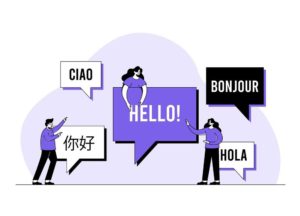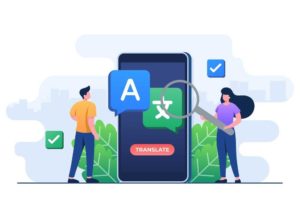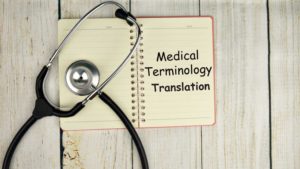In today’s diverse world, healthcare providers often encounter patients who speak different languages. Effective communication between patients and medical professionals is crucial for accurate diagnoses and appropriate treatments.
To bridge the language gap and ensure quality healthcare for all, medical interpreter apps like EMTRAN have emerged as a transformative solution. But many people do not know how to use these apps, so, let’s dive and see the whole process.
Understanding the Importance of Medical Interpreter Apps
In a multicultural society, language barriers can pose significant challenges in the healthcare system.
Medical interpreter apps play a vital role in breaking down these barriers, allowing patients and healthcare providers to communicate seamlessly, regardless of their native languages.
Some years ago hospitals had to hire interpreters for the purpose of translation, but there were not many bilingual people to cover the whole gap.
Keeping that in mind apps like EMTRAN have provided the perfect solution for hospitals, doctors and individuals as well.
How Medical Interpreter Apps Operate
By now you probably have got an idea of what these apps are. so let’s just move on and see how these apps actually work.

- Utilizing Real-Time Translation Technology
- Secure Data Transmission and Privacy
- Supporting Multiple Languages
- Integration with Telemedicine Platforms
1. Utilizing Real-Time Translation Technology
Medical interpreter apps leverage advanced real-time translation technology. When a patient and a healthcare provider speak, the app processes the speech, recognizes the language, and provides instant translations, converting speech into text and vice versa.
2. Secure Data Transmission and Privacy
Privacy and data security are critical in the healthcare sector. Medical interpreter apps ensure that all conversations are encrypted, protecting sensitive patient information and complying with healthcare data regulations.
When hospitals hire people to translate things for you then there is a good chance that these interpreters might breach your privacy. With the translator apps that is not the case.
3. Supporting Multiple Languages
To cater to a diverse patient population, medical interpreter apps support multiple languages. From widely spoken languages to rare dialects, these apps aim to cover a comprehensive range of linguistic needs.
There are a number of languages and is not possible for the doctor, patient or even the interpreter to know them all. But with this app language is no more a barrier.
4. Integration with Telemedicine Platforms
In the era of telemedicine, medical interpreter apps have integrated seamlessly into virtual consultations. Through these apps, medical professionals can communicate effectively with patients even in remote locations.
Advantages of Using Medical Interpreter Apps
Medical interpreters have numerous advantages. The list is too long to cover here. So, we have compiled a list of the most prominent advantages of this app.
- Improving Patient Outcomes
- Enhancing Communication Efficiency
- Reducing Medical Errors
- Promoting Cultural Sensitivity
1. Improving Patient Outcomes
Effective communication leads to better patient understanding of their conditions, treatment options, and medications.
Medical interpreter apps contribute to improved patient outcomes and adherence to medical advice. Just imagine you are sick and have gone to see and doctor and the doctor does not understand your language, that is a big problem.
But the interpreter apps like EMTRAM are the perfect choice for you and the doctor as well.
2. Enhancing Communication Efficiency
Gone are the days of time-consuming language interpretation. Medical interpreter apps expedite the communication process, enabling medical professionals to focus more on patient care.
3. Reducing Medical Errors
Miscommunication can lead to serious medical errors. With medical interpreter apps, the chances of misunderstandings and misinterpretations are minimized, promoting safer healthcare practices.
4. Promoting Cultural Sensitivity
Language and culture are intertwined, and medical interpreter apps help bridge the cultural gap between patients and healthcare providers. Understanding cultural nuances enhances patient satisfaction and trust in medical services.
Challenges and Solutions
It is not to say that these apps are flawless. There are certainly some shortcomings but there are also solutions to all those problems. Let’s have a look at some of the problems and the ways to tackle these problems.
Internet Connectivity and Reliability
In areas with limited internet access, connectivity issues may arise. Medical interpreter apps should consider offline functionality or workarounds to ensure uninterrupted service.
It is a very common problem. There are a huge number of places all over the world where the connection is either slow or does not even exist. To make this app more accessible to all those areas, creating an offline version would be great.
Accents and Dialects
Accents and regional dialects can pose challenges for accurate translations. App developers are continuously working on refining algorithms to handle diverse speech patterns.
Not all people speaking the same language necessarily have the same accent, so these apps need to make sure that every accent is covered. Otherwise, a small mistake can lead to a major problem.
Handling Sensitive Medical Terminology
Medical jargon can be complex, even for human interpreters. These apps need to be equipped with robust terminology databases to ensure accurate translations of specialized medical terms.
Medical language itself is a language when it comes to different terms. So, these apps need to make sure that all those terms are part of the algorithms of these apps.
And if you are looking for the perfect interpreter app then EMTRAN is the perfect choice for you. Download our app and see for yourself, how efficient the app is.
The Future of Medical Interpreter Apps
The future of medical interpreter apps is very bright. There is a lack of interpreters all over the world and these are the perfect solution to that arising problem.
These apps are also working on a number of new advancements to make things easier for patients and doctors as well. In a few years’ time language barrier is not going to be a problem.
- AI Advancements and Machine Learning
- Customization for Specialized Medical Fields
- Wearable Interpreter Devices
1. AI Advancements and Machine Learning
As artificial intelligence evolves, medical interpreter apps will become even more accurate and context-aware, providing an experience akin to a professional human interpreter.
We have already seen what innovations like chat GPT can do, and if the same approach is followed translators app too can revolutionalize the field of medicine.
2. Customization for Specialized Medical Fields
Medical specialities often have unique terminology. Future apps will cater to specific medical disciplines, ensuring precise translations tailored to the field’s requirements.
This is the perfect solution to put an end to complex medical terms. Specific apps working on specific problems can be much more efficient.
3. Wearable Interpreter Devices
In the not-so-distant future, wearable devices may act as portable medical interpreters, making healthcare communication even more accessible and convenient.
Embracing the Medical Interpreter App Revolution
Healthcare institutions and providers should wholeheartedly adopt medical interpreter apps as a standard tool for patient care. Embracing this technology fosters a more inclusive and patient-centred healthcare environment.
The technology is new and it has always been very hard for people to adopt new technology. With time these apps are likely to replace human interpreters, so it is a good idea to start using them right away.
Conclusion
Medical interpreter apps have revolutionized the way healthcare professionals communicate with patients who speak different languages. By leveraging real-time translation technology, ensuring data security, and promoting cultural sensitivity, these apps have become indispensable in modern healthcare.
FAQs
The app for medical interpreters is a mobile application that facilitates real-time language translation during healthcare interactions.
Yes, there are apps available that can translate medical documents to help bridge language barriers in healthcare.
Speak clearly and at a moderate pace, provide context, and maintain eye contact to enhance communication with a medical interpreter.
A voice translator app uses speech recognition and advanced algorithms to convert spoken words into text and translate them into the desired language.







